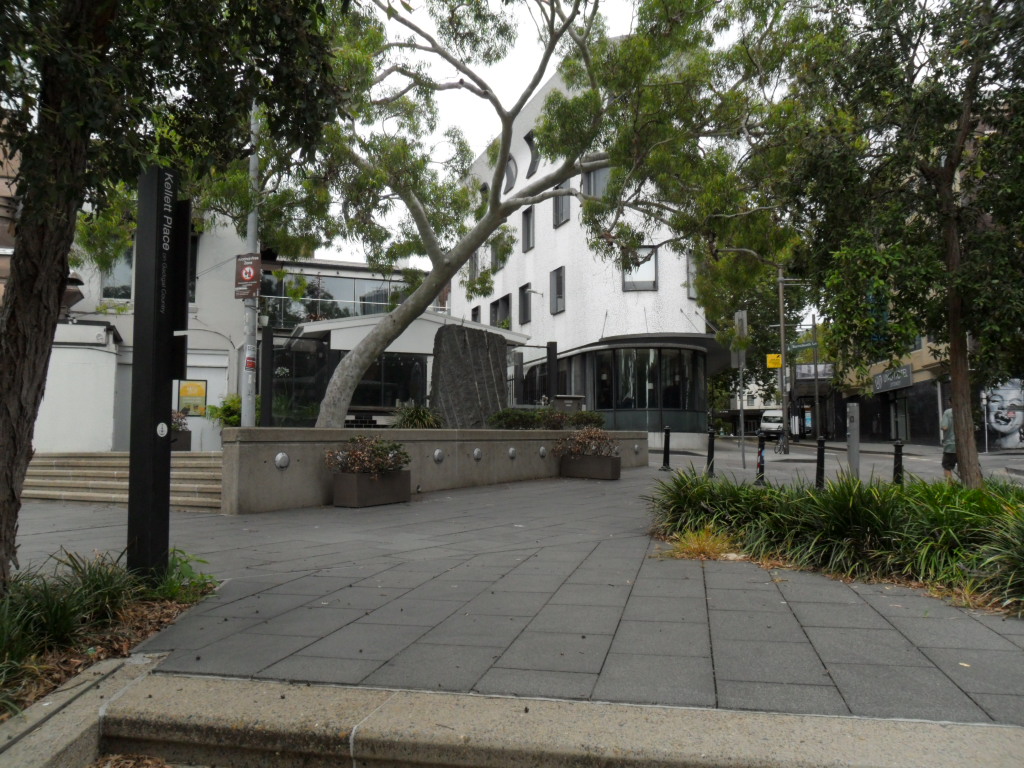Kellet Plaza

Kellet Plaza has recently been named by Sydney Council. It has been a no-name piece of urban space for many years after being adaptively re-used from a vacant piece of land in about 2000. The former South Sydney Council, which was in control of the 2011 postcode area from 1989 to 2004, was concerned about misuse of this sliver of an inner-urban corner block for anti-social activities. It promoted an open consultation on-site forum for its re-design with locals submitting their own designs. It now contains beds of Lavender, a sweet smelling lemon-scented gumtree, garden bed foot path lighting and a big granite boulder, an artwork suggested by South Sydney Council.
The boulder is an artwork with no known title.
It has been described as an asteroid fallen to earth out of its orbit!
It is big and very, very heavy. When it arrived for installation Ward Avenue, Roslyn Street and Kellet Way were all blocked off all day. A giant truck ferried the item into its general location and a super-sized crane cradled the stone into place shackled in heavy duty chains. Once landed, the artist then pecked at it and engrailed it with striations giving the surface added interest and texture.
There it remains, unmoved and seemingly unmoveable.
Kellett Place faces Ward Avenue to its east and sits on the intersection of Kellet Way and Roslyn Street to its west.
It enjoys direct sunshine and is an a popular alfresco cafe area.
Kellet Lane gets its name from historic Kellet House which once occupied the block and faced Kellet Street which runs parallel to Roslyn Street. Kellet House was built on land that originally belonged to an 1800s subdivision known as the Kellett Estate. A subdivision map from 1864 confirms the corner site on the corner of Bayswater Road was occupied by an 1830s colonial villa named Kellett House.
Kellett House had been occupied by a who’s who of the early colony, including the Deputy Surveyor-General, Samuel Augustus Perry, and the first Premier of NSW, Stuart Donaldson.
In 1864 it was purchased by successful pastoralist William Frederick Buchanan. Kellett House remained on the corner until 1885 when Buchanan had it demolished to make way for the Hotel Mansions and the adjoining row of terraced houses on what was then called “Upper William Street North”, now Bayswater Road. The original Hotel Mansions was an ornate four-storey Victorian building with a turret. It stood alongside a similarly impressive row of terraces on Bayswater Road, known as the Bayswater Terrace which are now heritage-listed and believed to date to the 1890s.
by Andrew Woodhouse
Heritage Solutions





